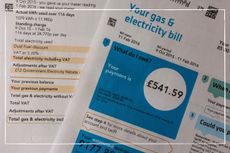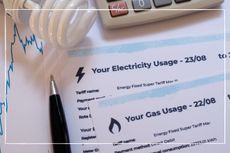How to switch to the best (and cheapest!) broadband deal
Finding a good (and cheap!) broadband deal can be a real minefield. Here's our expert guide to switching to a better package.


We're lucky to have a whole range of providers offering different speeds and prices for broadband. But this makes choosing the right (and cheapest!) package a real minefield.
Choosing the right broadband package is difficult. From knowing what speed you need to comparing the price of bundle deals, it's enough to leave anyone perplexed.
We've rounded up all the essential things you need to consider when choosing a deal and explain how to switch providers.
Can you leave?
Before you start thinking about leaving your provider you need to check that you're out of your contract's minimum term. Call them and check if you're not sure.
Choosing a deal
There are a few two main things to consider when taking out a new broadband contract:
- How fast is it? What speed do you need? If you want to watch TV online then you'll need a fairly decent speed.
- Data limits How much data do you need? If you use the internet for sending emails, reading the news and watching the odd video on YouTube then you don't need to worry too much. But if you are using it to download music and films or streaming catch-up TV then you should consider an unlimited package.
What about superfast broadband?
The main providers offering superfast broadband are BT and Virgin Media. At the moment not everyone can get it - so check with the provider directly to see if your postcode is covered. TalkTalk and PlusNet also offer packages through BT's network - so it's worth checking them out too.
Bundle
Could you save money by getting a ‘bundle' deal? This where you take out broadband, home phone and sometimes TV contracts from the same provider. It also makes the setup smoother (handy if you've just moved into a new place) and means you just get billed once each month for the whole lot.
GoodtoKnow Newsletter
Parenting advice, hot topics, best buys and family finance tips delivered straight to your inbox.
Compare
Use price comparison websites, like broadbandchoices, uSwitch and MoneySuperMarket to compare deals. Don't get sucked in by discounts - compare the price of the full contract as well as the month-by-month cost. It is important to get a realistic picture of what you will have to pay in the first year, so get your sums right before switching. Also, don't forget to factor in the cost of line rental. Some providers advertise impressively low deals to encourage you to sign up but they don't tell you that this doesn't always include line rental.
Cheaper is not always better
An ultra-low monthly subscription can be attractive but you need to consider what you're losing over some of the more expensive networks. Sometimes it's not as simple as lower data limits or slower speeds, some ISPs have a poor reputation for customer support, or you may end up paying in subtle ways like expensive cancellation fees. Customers make for the harshest critics, so look for reviews online to get a realistic picture of the service that the provider offers.
Haggle
If you're outside of your contract's minimum term then you could try and haggle with your current provider. They will be keen to keep you as a customer so ask them what they can offer you.
Get your MAC code
Some switches need a MAC code (Migration Authorisation Code) and firms have to give this to you within five days of requesting it. You can get the code by calling your current provider.
Pay your line rental up front
Line rental is a ‘hidden cost' of broadband and in many cases is pricier than the package itself. Some providers, like Sky and BT, offer a significant discount of around £40 to customers who pay for their line rental upfront so it's worth doing if you can afford it.
Cashback
Once you've settled on a deal check with a cashback website, like Quidco or TopCashback, to see if they have the same offer. If they do, go through them and you could earn money just for taking out the contract.
Where to next?
Trusted, informative, and empathetic – GoodToKnow is the ultimate online destination for mums. Established in 2007, our 15-year-strong archive of content includes more than 18,000 articles, 1,500 how-to videos, and 7,000 recipes.
-
 Is Brandy pregnant? Bluey fans think the Heelers could be about to welcome a new cousin following the season 3 finale
Is Brandy pregnant? Bluey fans think the Heelers could be about to welcome a new cousin following the season 3 finaleEagle-eyed Bluey viewers are wondering if Aunt Brandy is pregnant, following a touching moment in the season three finale.
By Ellie Hutchings Published
-
 5 reasons why 'high-achieving women' may struggle with motherhood, according to a postpartum therapist - but we think all mums can relate
5 reasons why 'high-achieving women' may struggle with motherhood, according to a postpartum therapist - but we think all mums can relateMotherhood is a huge adjustment for any woman, but a postpartum therapist has explained five factors that make is difficult for 'high-achieving women'.
By Ellie Hutchings Published
-
 Is electricity cheaper at night and what time counts as peak and off peak?
Is electricity cheaper at night and what time counts as peak and off peak?There’s a lot of confusing advice around this topic, but our energy expert sets the record straight
By Emma Lunn Last updated
-
 When will energy prices go down for your family?
When will energy prices go down for your family?Millions of families have been wondering when energy prices will go down now that the price cap is confirmed to drop
By Emma Lunn Last updated
-
 What to do if you’re struggling to pay your energy bills
What to do if you’re struggling to pay your energy billsAmid the cost of living crisis, it’s unsurprising that more and more people are wondering what to do if they are struggling to pay their energy bills
By Emma Lunn Last updated
-
 How much does a tumble dryer cost to run and how can you make it cheaper?
How much does a tumble dryer cost to run and how can you make it cheaper?Curious to know how much your tumble dryer costs to run and how to reduce costs? We’ve crunched the numbers to find out
By Sarah Handley Last updated
-
 How much will my energy bills cost? Use our energy calculator to find out
How much will my energy bills cost? Use our energy calculator to find outUse our calculator to find out how much your energy bills will cost now that the January 2024 price cap has been announced
By Sarah Handley Last updated
-
 Should I fix my energy prices to save money or stay on the price cap?
Should I fix my energy prices to save money or stay on the price cap?We explore the benefits of fixed energy prices and discuss if fixing will save you more money than if you stick with the current price cap
By Emma Lunn Last updated
-
 How is council tax calculated - and how can you request a reduction?
How is council tax calculated - and how can you request a reduction?We explain how council tax is calculated and whether you might be able to apply for a reduction
By Rachel Wait Last updated
-
 Could solar panels save you money?
Could solar panels save you money?You've probably seen at least one on a rooftop near you - but what's the big deal? And do they actually save you money? goodtoknow investigates.
By Tara Evans Published